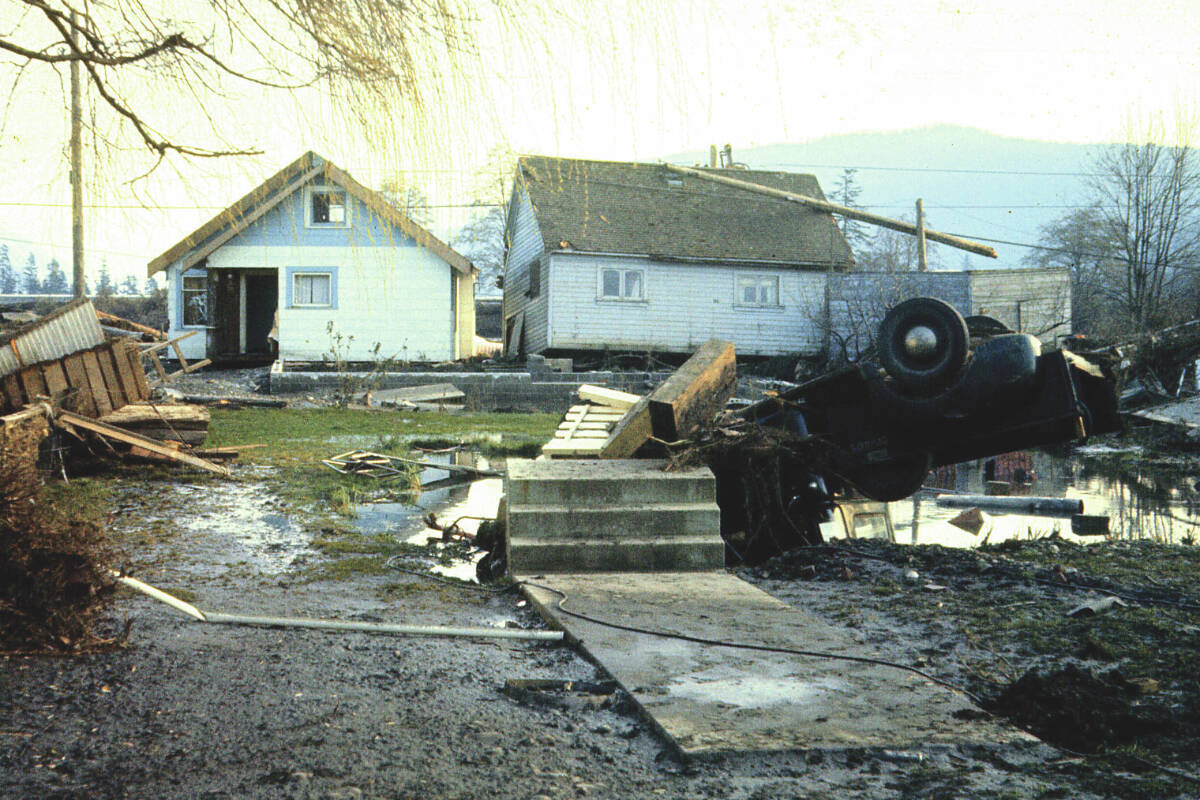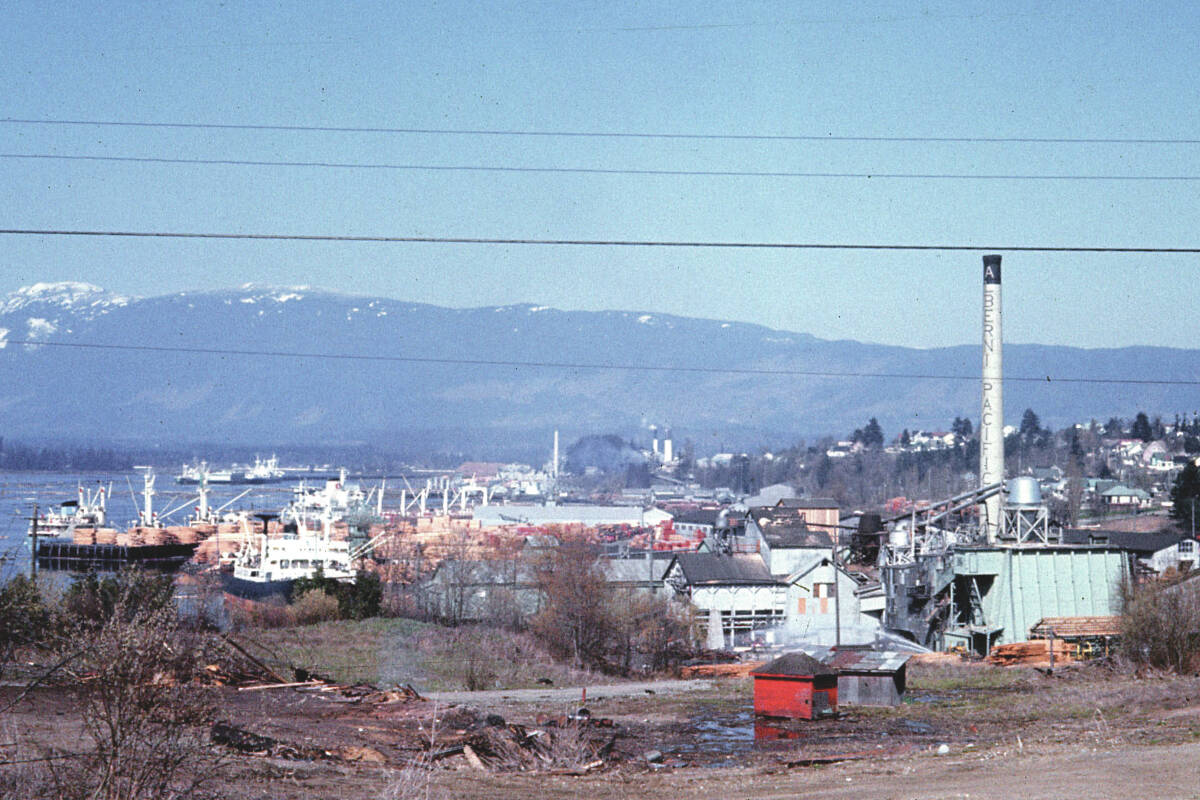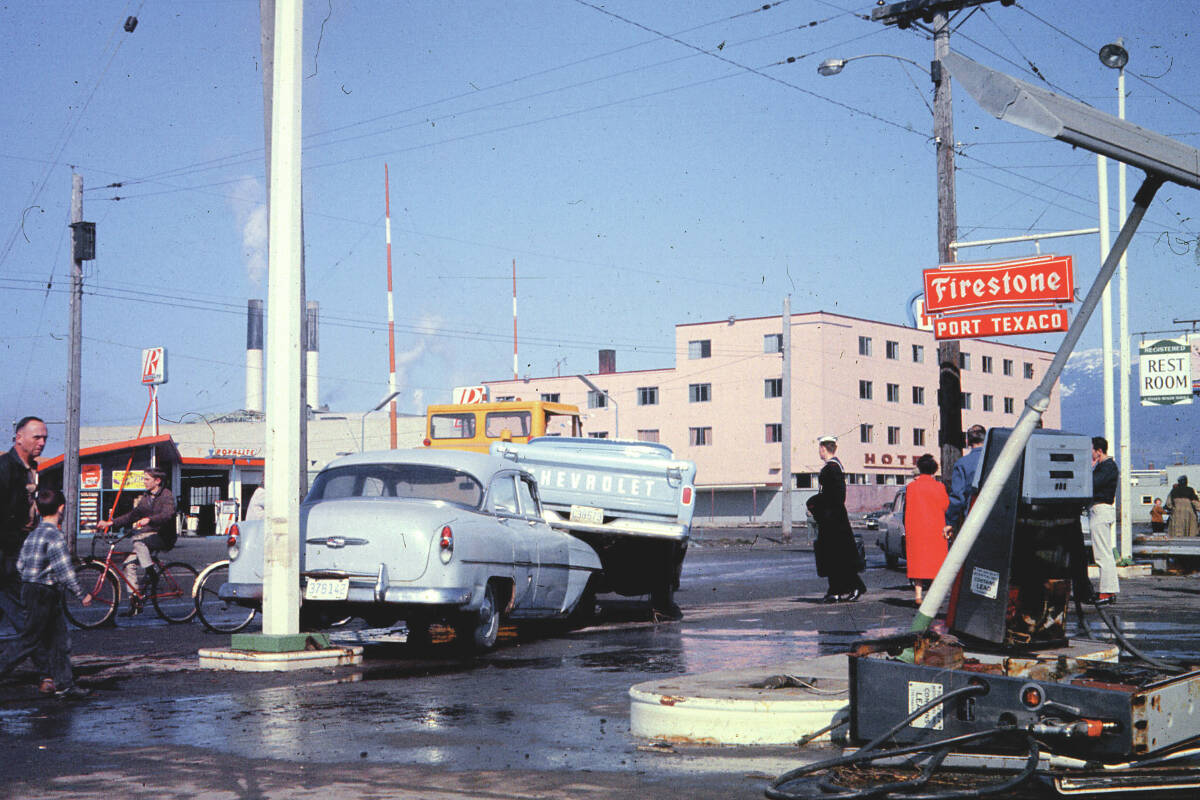Sixty years ago, in the middle of the night on March 27, 1964, Port Alberni was hit with a tidal wave—what we now call a tsunami. It was Good Friday, and most people were asleep.
The wave—actually a series of three waves—were a result of an earthquake off the coast of Alaska that measured 8.5 on the Richter scale.
The water funneled up the Alberni Inlet from the west coast, gathering speed as the inlet or canal narrowed and spilling over the shoreline.
The tsunami remains a pivotal event in the history of the Alberni Valley, even though the number of people who experienced it are dwindling.
Geo Monrufet was 15 years old in 1964 and his father owned the famed MV Lady Rose passenger and cargo vessel. His father received word that a tidal wave was on its way, so he and Geo drove from Sproat Lake to the city.
“We arrived to see the first wave hit by the pulp mill,” Monrufet recalls.
“We took the high ground to be able to get down to the Lady Rose dock. It had broken loose except for one rope; we were able to jump on board and Dad started the engine.”
Geo worked in the engine room while his father was in the wheel room, maneuvering the vessel into the harbour to ride the rest of the waves. Monrufet still chokes up when he remembers the experience.
Monrufet is part of the Port Alberni Maritime Heritage Society that has planned a special event on March 27 to commemorate the 60th anniversary of the Port Alberni tsunami. He and others will be sharing their stories and encouraging others to come and share theirs as well.
Michael Lyle was 14 years old in March 1964 and living with his aunt on Kitsuksis Road while his mother—a telephone operator—lived in a home on Golden Street. Lyle remembers his mother was working the night shift on March 27.
“She called and said there’s going to be a tidal wave, and could we go to her house to get her dogs…we got to the bottom of Kitsuksis Road and there was water. The water was already up to Mary Street and we weren’t able to get to Golden Street,” he related.
He had to backtrack to Johnston Road. “We could see houses and garages and stuff going down the river. There were boats up on the road. It was quite a while before we could get to my mother’s house.” When he finally made it the next day, he learned the dogs had spent their time on the couch and weren’t affected by the six to eight inches of floodwater that had entered her home.
Lyle said once the waves receded “there was a horrible stink. It was the black mud that came up from the bottom of the canal.”
Loretta Parkinson was working in Ward’s Cleaners at Second Avenue and Athol Street when the tsunami hit. She said the first she heard about the waves was from a phone call—from Seattle, Washington.
She was busy inside, where there are no windows.
“I didn’t hear any alarms,” she said. “As soon as I got down to the office I got a phone call.”
It was relatives from Seattle frantically asking if she was OK: they had heard about the earthquake in Alaska and the tidal waves that hit Port Alberni. It took a few minutes to calm them down and reassure them that she was fine—her home was well out of the inundation zone.
She said the commercial laundry was busy for weeks after the event. “We got all the linens from the hotels in the low-lying areas,” she said. The Greenwood (where Ocean…Marina is now), the Barclay Hotel, which was previously located at the bottom of Redford Street, the Somass Motel, Riverside Auto Court — they were all affected by flooding.
Unlike Parkinson, Bob Cole and some of his friends—all teenagers at the time—saw the first wave hit. “We saw the first swell at the bottom of Argyle Street,” Cole recalled. They were driving in Cole’s father’s car toward River Road.
He remembers the “in-between” time, before a tidal wave hits, when water is drawn away from shore.
“The Somass River went almost dry,” he said. “Then we saw sparks from the pulp mill” as the water surged. “The next thing we see is a white pickup truck tumbling up the river.”
He said he could hear crunching and rumbling as the water surged.
He was driving on River Road when the water reached the road (it wasn’t built up as it is today).
He turned right onto Josephine Street, he said, but he wasn’t able to outrun the water even with the group pushing the car. He remembers seeing people fleeing their homes with boxes in their arms, and still regrets not stopping to help them.
“I called home after midnight…I said the clutch went and there’s been a tidal wave,” he recalled. “Dad said ‘you’ve told some tales, but this one takes the cake.’”
Cole said witnessing the tsunami first hand “is something that sticks in my mind.”
READ ALSO: Real-life tsunami threat in Port Alberni prompts evacuation updates
READ ALSO: Tsunami warnings 101: Canada
Breaking NewsPORT ALBERNITsunami




